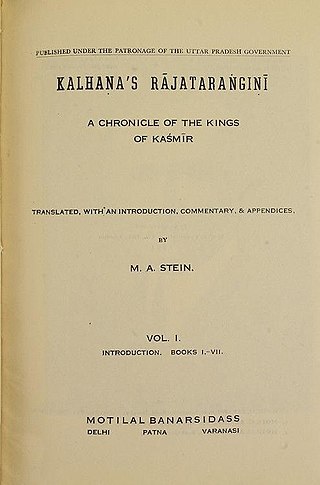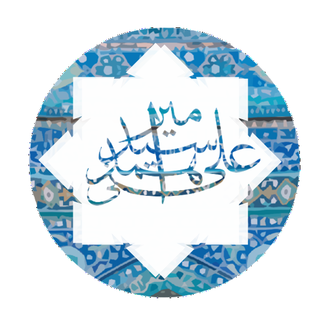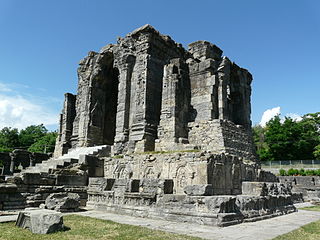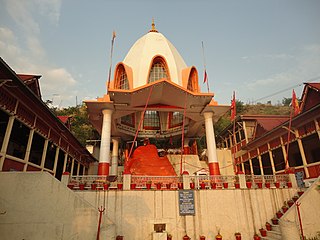
Srinagar is a city in Indian-administered Jammu and Kashmir in the disputed Kashmir region. It is the largest city and summer capital of Jammu and Kashmir, which is an Indian-administered union territory. It lies in the Kashmir Valley along the banks of the Jhelum River, and the shores of Dal and Anchar lakes, between the Hari Parbat and Shankaracharya hills. The city is known for its natural environment, various gardens, waterfronts and houseboats. It is also known for traditional Kashmiri handicrafts like the Kashmir shawl, papier-mâché, wood carving, carpet weaving, and jewel making, as well as for dried fruits. It is the second-largest metropolitan area in the Himalayas.

The history of Kashmir is intertwined with the history of the broader Indian subcontinent in South Asia with influences from the surrounding regions of Central and East Asia. Historically, Kashmir referred to only the Kashmir Valley of the western Himalayas. Today, it denotes a larger area that includes the Indian-administered union territories of Jammu and Kashmir and Ladakh, the Pakistan-administered territories of Azad Kashmir and Gilgit-Baltistan, and the Chinese-administered regions of Aksai Chin and the Trans-Karakoram Tract.

The Kashmiri Pandits are a group of Kashmiri Hindus and a part of the larger Saraswat Brahmin community of India. They belong to the Pancha Gauda Brahmin group from the Kashmir Valley, a mountainous region located within the Indian union territory of Jammu and Kashmir. Kashmiri Pandits are Hindu Kashmiris native to the Kashmir Valley, and the only remaining Hindu Kashmiris after the large-scale of conversion of the Valley's population to Islam during the medieval times. Prompted by the growth of Islamic militancy in the valley, large numbers left in the exodus of the 1990s. Even so, small numbers remain.
Jonaraja was a Kashmiri historian and Sanskrit poet. His Dvitīyā Rājataraṅginī is a continuation of Kalhana's Rājataraṅginī and brings the chronicle of the kings of Kashmir down to the time of the author's patron Zain-ul-Abidin. Jonaraja, however, could not complete the history of the patron as he died in the 35th regnal year. His pupil, Śrīvara continued the history and his work, the Tritīyā Rājataraṅginī, covers the period 1459–1486.
Shrivara [Śrīvara] wrote a work on the history of Kashmir that adds to the previous works of Kalhana and Jonaraja, thereby providing an update of the history of Kashmir till 1486 CE. Śrīvara served at the courts of the four Šāhmīrī Sulṭāns Zayn al-ʿĀbidīn, Ḥaydar Šāh, Ḥasan Šāh and Maḥmūd Šāh until 1486, when Fatḥ Šāh took power for the first time. Holding this office since 1459, Śrīvara concentrated on writing the history he had personally witnessed. Unlike his predecessors Kalhaṇa and Jonarāja, who had completed the history of Kashmir in retrospect and continued it up to their respective times, Śrīvara, as a contemporary historian, was left with only occasional retrospective additions going back to 1451. His accounts, the Jaina- and Rājataraṅgiṇīs, written as an eyewitness, are characterised by a remarkably detailed density that hardly leaves out any aspect of his coeval horizon of observation and reflection on everyday Kashmiri culture, court life, politics, religion and society. The consolidation of the religious and political influence of a group of Sayyids, who had migrated from Baihaq in Iran under earlier Šāhmīrī Sulṭāns such as Sikandar, and the dynamics triggered by their attempts under Ḥasan Šāh and Maḥmūd Šāh to participate in the reign, culminated in a devastating civil war between factions of indigenous Kashmiris (kāśmīrika) and the immigrants from abroad. These events are of particular research interest for tracing the historical ramifications of the Islamisation process in Kashmir. In terms of richness of detail of everyday culture also in its material aspects, Śrīvara’s work is by far the most abundant source on Indo-Persian rule in early modern India and the living conditions under omnipresent threats of famines, natural disasters and warfare. Śrīvara’s work breaks off with Maḥmūd Šāh’s (first) dethronement followed by Fatḥ Šāh’s ascension to the throne. The abrupt end of his account was however not caused by Śrīvara’s death. Nineteen years later we hear from him again in the prelude to his Sanskrit translation of Jāmi’s (1414–1492) Persian Yusof o Zoleykhā, entitled the Kathākautuka. Śrīvara dated his prologue April 18, 1505. The sudden interruption of Śrīvara’s Rājataraṅgiṇī, coinciding with the transition of power in 1486, should therefore be sought in his removal from the position of court biographer. Śrīvara had completed his Sanskrit rendering of Jāmi’s Persian composition (1483) only twenty-two years after its publication in Herat.
Sikandar Shah was the sixth sultan of the Shah Miri dynasty of Kashmir from 1389 to 1413.

Rājataraṅgiṇī is a metrical legendary and historical chronicle of the north-western part of India, particularly the kings of Kashmir. It was written in Sanskrit by Kashmiri historian Kalhana in the 12th century CE. The work consists of 7826 verses, which are divided between eight books called tarangas ("waves").
Kota Rani was the last ruler of the Hindu Lohara dynasty in Kashmir. She was also the last female ruler of Kashmir. She was regent for her new husband because of the minority of her son in 1323−1338, and ruled as monarch in 1338−1339. She was deposed by Shah Mir, who became the second Muslim ruler of Kashmir after Rinchan who converted to Islam and ruled as Sultan Sadr-ud-din.

Buddhism was an important part of the classical Kashmiri culture, as is reflected in the Nilamata Purana and Kalhana's Rajatarangini. Buddhism is generally believed to have become dominant in Kashmir in the time of Emperor Ashoka, although it was widespread there long before his time, enjoying the patronage not only of Buddhist rulers but of Hindu rulers too. From Kashmir, it spread to the neighbouring Ladakh, Tibet and China proper. Accounts of patronage of Buddhism by the rulers of Kashmir are found in the Rajatarangini and also in the accounts of three Chinese visitors to Kashmir during 630-760 AD.

The Shah Mir dynasty was a dynasty that ruled the region of Kashmir in the Indian subcontinent. The dynasty is named after its founder, Shah Mir.

Kashmiris are an Indo-Aryan ethnolinguistic group speaking the Kashmiri language, that live, have lived, or their ancestors have lived, mostly, but not exclusively, in the Kashmir Valley, which is now in the Indian-administered union territory of Jammu and Kashmir.

Ghiyas-ud-Din Zain-ul-Abidin was the eighth sultan of the Shah Mir dynasty of Kashmir. He was known by his subjects as Bud Shah.

Mir Sayyid Ali Hamadani was a Sufi Muslim saint of the Kubrawiya order, Persian scholar and poet. He was born in Hamadan, Iran and preached Islam in Central Asia and Kashmir as he travelled to practice Sufism. He died in Kashmir and was buried in Khatlan, Tajikistan in 1384 CE, aged 71–72. Hamadani was also addressed honorifically throughout his life as the Shāh-e-Hamadān, Amīr-i Kabīr, and Ali Sani.

Sultan Shamsu'd-Din Shah Mir or simply Shamsu'd-Din Shah or Shah Mir was the second Sultan of Kashmir and founder of the Shah Mir dynasty. Shah Mir is believed to have come to Kashmir during the rule of Suhadeva, where he rose to prominence. After the death of Suhadeva and his brother, Udayanadeva, Shah Mir proposed marriage to the reigning queen, Kota Rani. She refused and continued her rule for five months till 1339, appointing Bhutta Bhikshana as prime minister. After the death of Kota Rani, Shah Mir established his own kingship, founding the Shah Mir dynasty in 1339, which lasted till 1561.
Kashmiri Muslims are ethnic Kashmiris who practice Islam and are native to the Kashmir Valley in Indian-administered Kashmir. The majority of Kashmiri Muslims are Sunni. They refer to themselves as "Koshur" in their mother language.

The Martand Sun Temple is an eighth century (CE) Hindu temple attributed to Lalitaditya Muktapida of the Karkota dynasty. The temple is located near the city of Anantnag in the Kashmir Valley of Jammu and Kashmir, India. It was dedicated to Surya, the chief solar deity in Hinduism; Surya is also known by the Sanskrit-language synonym Martand. The temple was destroyed by the Muslim ruler Sikandar Shah Miri in an effort to Islamise the Kashmir valley. Martand Sun Temple is one of the three holiest sites of pilgrimage for Kashmiri Pandits, alongside the Sharada Peeth and the Amarnath Temple.
Rinchan Shah was the 1st Sultan of Kashmir from 1320 to 1323. Originally said to have been a Ladakhi Buddhist, he converted to Islam, becoming the first Muslim ruler of Kashmir. He was known as Sultan Sadr-ud-Din after his conversion to Islam.

Kashmiri Hindus are ethnic Kashmiris who practice Hinduism and are native to the Kashmir Valley of India. With respect to their contributions to Indian philosophy, Kashmiri Hindus developed the tradition of Kashmiri Shaivism. After their exodus from the Kashmir Valley in the wake of the Kashmir insurgency in the 1990s, most Kashmiri Hindus are now settled in the Jammu division of Jammu and Kashmir and other parts of the country. The largest group of Kashmiri Hindus are the Kashmiri Pandits.

Khanqah-e-Moula, also known as Shah-e-Hamadan Masjid and Khanqah, is a mosque located in the Old City of Srinagar in Jammu and Kashmir, India. Situated on the right bank of the river Jhelum between the Fateh Kadal and Zaina Kadal bridges, it was first built in 1395 CE, commissioned by Sultan Sikendar in memory of Mir Sayyid Ali Hamadani. It is held to be the first Khanqah—mosques associated with specific saints—in the Kashmir valley. It is one of the best examples of Kashmiri wooden architecture, and is decorated with papier mache.
Walter Slaje is an Austrian Indologist.













